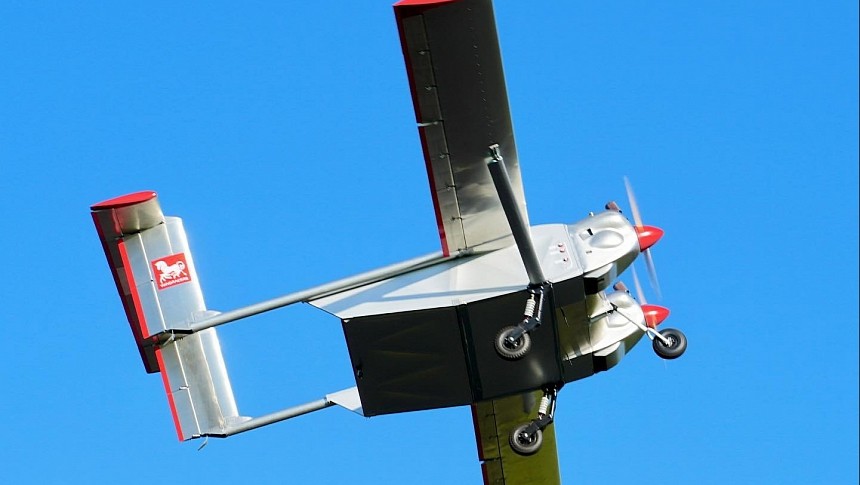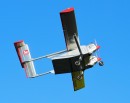Ultra is the name of a fully autonomous heavy-duty drone built to withstand the most challenging environmental conditions. It will prove its prowess at the beginning of next year in Antarctica during a research project for the British Antarctic Survey.
The British Antarctic Survey (BAS) has embarked on a journey towards cleaner operations and increased efficiency. Unmanned vehicles such as UAVs (uncrewed aerial vehicles) and AUVs (autonomous underwater vehicles) have the potential to revolutionize scientific research, particularly in harsh environments, due to their combination of low-carbon operations, low cost, extensive capabilities, and added safety.
BAS will be testing the power of a fully autonomous drone during its upcoming Antarctic field season between January and March of 2024. It's not just any drone, but one that its developer described as "the Jeep of the skies."
Ultra, the drone developed by Windracers, is a ten-meter (32.8 feet) fixed-wing aircraft equipped with a state-of-the-art autopilot system (Masterless, developed by Distributed Avionics). Its name stands for "uncrewed low-cost transport" and it's basically a cargo platform specifically geared towards so-called "challenging logistics."
It combines an impressive payload (100 kg/220 lb) with an extensive range of up to 1,000 km (621 miles). Powered by twin-stroke engines, the Ultra drone claims to lower CO2 emission levels by 30% per kilo of payload compared to twin-prop light aircraft. A rugged machine, Ultra can take off and land on rough terrain with minimal ground-based human supervision. Plus, it's equipped to continue to fly even if one of its engines gets damaged or fails.
The Windracers drone is particularly suitable for scientific research due to its flexibility. Thanks to its generous floor area, volume, and power, it can handle a wide selection of scientific payloads. This also means that different sensors can be exchanged quickly in preparation for specific types of missions.
Plus, Ultra boasts another impressive capability. It can operate in coordination with other autonomous drones using AI-driven technology. This will allow operators to cover wider areas in a shorter time.
The potential of autonomous drone swarms is one of the main focuses of a wider-scale project funded by Innovate UK through the Future Flight 3 Challenge. BAS and Windracers are part of the project's pilot program called "Protecting environments with uncrewed aerial vehicle swarms," together with other institutions and industry partners.
The Ultra UAV is gearing up for multiple tasks in Antarctica, including assessing the marine food chain (via cameras), testing atmospheric turbulence, and assessing glaciological structures. And this is just the beginning. In the future, "the Jeep of the skies" could go even further, reaching polar areas that were inaccessible until now for conventional research platforms and paving the way for a new era of polar scientific research.
BAS will be testing the power of a fully autonomous drone during its upcoming Antarctic field season between January and March of 2024. It's not just any drone, but one that its developer described as "the Jeep of the skies."
Ultra, the drone developed by Windracers, is a ten-meter (32.8 feet) fixed-wing aircraft equipped with a state-of-the-art autopilot system (Masterless, developed by Distributed Avionics). Its name stands for "uncrewed low-cost transport" and it's basically a cargo platform specifically geared towards so-called "challenging logistics."
It combines an impressive payload (100 kg/220 lb) with an extensive range of up to 1,000 km (621 miles). Powered by twin-stroke engines, the Ultra drone claims to lower CO2 emission levels by 30% per kilo of payload compared to twin-prop light aircraft. A rugged machine, Ultra can take off and land on rough terrain with minimal ground-based human supervision. Plus, it's equipped to continue to fly even if one of its engines gets damaged or fails.
The Windracers drone is particularly suitable for scientific research due to its flexibility. Thanks to its generous floor area, volume, and power, it can handle a wide selection of scientific payloads. This also means that different sensors can be exchanged quickly in preparation for specific types of missions.
Plus, Ultra boasts another impressive capability. It can operate in coordination with other autonomous drones using AI-driven technology. This will allow operators to cover wider areas in a shorter time.
The potential of autonomous drone swarms is one of the main focuses of a wider-scale project funded by Innovate UK through the Future Flight 3 Challenge. BAS and Windracers are part of the project's pilot program called "Protecting environments with uncrewed aerial vehicle swarms," together with other institutions and industry partners.
The Ultra UAV is gearing up for multiple tasks in Antarctica, including assessing the marine food chain (via cameras), testing atmospheric turbulence, and assessing glaciological structures. And this is just the beginning. In the future, "the Jeep of the skies" could go even further, reaching polar areas that were inaccessible until now for conventional research platforms and paving the way for a new era of polar scientific research.







